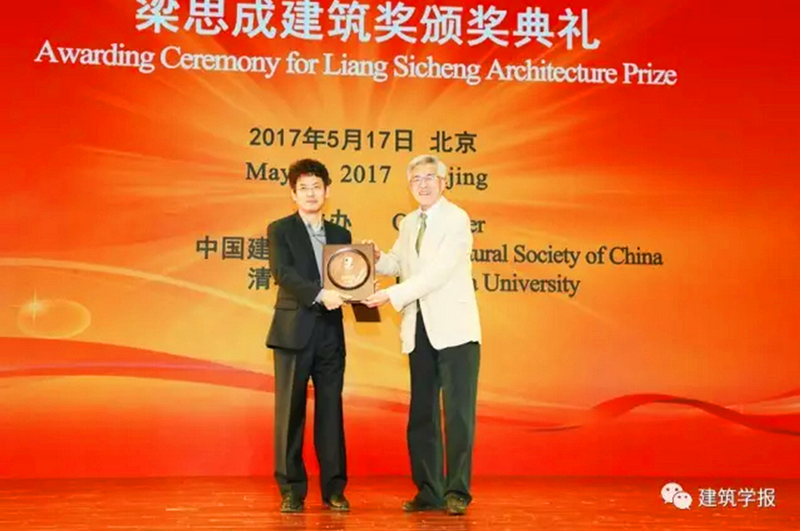
The ceremony to award the Liang Sicheng Architecture Prize was held at Tsinghua University in Beijing on May 17. The Prize aims to cultivate architects with an international perspective and national confidence, and to award architects, architectural theorists and architectural educators who contribute greatly to architecture industry. Chen Zhenggao from the Ministry of Housing and Urban-Rural Development of China (MOHURD) spoke at the ceremony.
Since the founding of the Prize in 2000, there have been 19 outstanding architect winners, including 11 academicians. The Prize is highly recognized and praised by the architectural community, and is considered as the greatest architecture prize that honors the lifetime achievement of architects. It encourages architects to be innovative and create more work with the "Designed in China” brand.
Kenneth King Mun Yeang and Zhou Kai won the prize. Kenneth King Mun Yeang is a Malaysian architect. He is the pioneer and the founder of archology theory and the icon of ecological architecture design. Zhou Kai is a Chinese architect who adheres to the concept of combining the environment with architecture, and advocates cost savings. The former President of the International Union of Architects (UIA) Vassilis Sgoutas in his appraised of the award said that the Prize showed the new spirit of going global, and was becoming equal to other top-class architecture prizes in the world. In recent years, with the largest annual construction volume China is the largest market for architecture in the world. With the upcoming Belt and Road initiative, the Xiongan New Area, accelerating urbanization and new construction projects including the sponge cities and double major city, architects of the day are facing the challenge of how to protect special and indigenous culture while adapting to economic globalization, and how to pave the way for “Designed in China”. The two prize winners solved the problem with their own theories of architecture as their architectural designs matched the new principle of applicability, economy, green and artistry.
President of the International Union of Architects Esa Mohamed attended the ceremony and extended his congratulations. Apart from the distinguished guests mentioned above, there were also academicians from the Chinese Academy of Engineering, Masters of engineering survey and design and representatives of the Architectural Society of China. The presidents of the national architects associations of America, France, Poland, Hungarian, the Philippines, Japan and Korea, representatives from Hong Kong, Macao and Taiwan, foreign architects who live in Beijing, experts and scholars from the architectural industry in China and student representatives also attended the ceremony. The two prize winners also delivered keynote speeches at the ceremony.
By: Fang Xueqing, Wu Jingjing, Xu Hui
Editors: Sun Xiaofang and Ross Colquhoun






